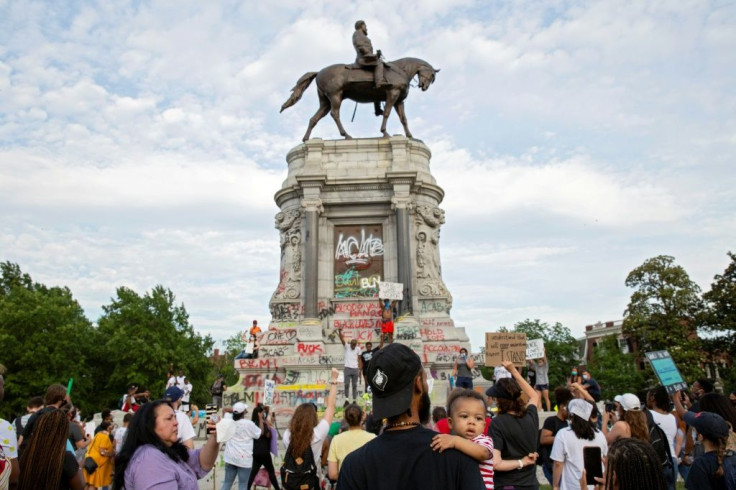Ole Miss To Relocate Confederate Monument At University Entrance To On-Campus Cemetery
KEY POINTS
- A 30-foot monument of a Confederate soldier was erected in 1906 to honor soldiers who fought during the Civil War
- It stands at the main entrance of the University of Mississippi
- In 2019, a mix of undergraduate students, graduate students, faculty, staff, and administrators voted to move the structure to an on-campus cemetery
The state of Mississippi was on the losing side of the Civil War (1861-1865), but the Confederate soldiers fought valiantly to defend a way of life that unfortunately included the institution of slavery. To honor those soldiers, a 30-foot monument of a Confederate soldier in a battle-ready pose was erected in 1906 by the United Daughters of the Confederacy.
The statue stands at the main entrance of the University of Mississippi, also known as Ole Miss, and is visible to every visitor who enters the institute of higher learning. In 2019, a mix of undergraduate students, graduate students, faculty, staff and administrators voted to move the structure to an on-campus cemetery where hundreds of Confederate soldiers are buried.
The complicated dynamics of Ole Miss stem from three sources:
- It is in the deep south of the United States, a place steeped in Confederate traditions, history, and cultural icons
- It has a violent past filled with racist and sexist incidents including the 1962 riots by white segregationists protesting the admission of James Meredith, a black student, to the formerly all-white campus. Two people were killed
- The campus receives endowments from wealthy and powerful white alumni who wish to maintain the Confederate symbolism and thus are resistant to remove symbols of the Confederacy that many find troubling
The move to relocate the monument has taken on a greater sense of urgency with the racial unrest caused by the killing of George Floyd in Minneapolis by a white policeman. Demonstrations have led to Confederate statues all through the southeast being toppled or defaced.
A final step needed for the move of the statue to the cemetery is the approval of the board of trustees of the Institutions of Higher Learning (IHL), a 12-member board made up entirely of appointees by former Republican Gov. Phil Bryant, a member of the Sons of Confederate Veterans. The board is expected to give their approval during their next meeting Thursday (June 18).
During the 2018-2019 academic year, students made their voices heard and argued the statue should be moved because it did not represent the present-day values of the student body. The student government, followed by the faculty senate, the graduate student council, the staff council, and the university’s top brass all approved the measure.
Moving the controversial Confederate icon to a less visible location appears to be an acceptable compromise. On one side are those who want to see it eliminated. On the other side are those wanting to maintain the statue’s presence in a location that is uncomfortable for many people. The unheard voices are the soldiers who are buried in the monument’s likely new location.

© Copyright IBTimes 2025. All rights reserved.





















